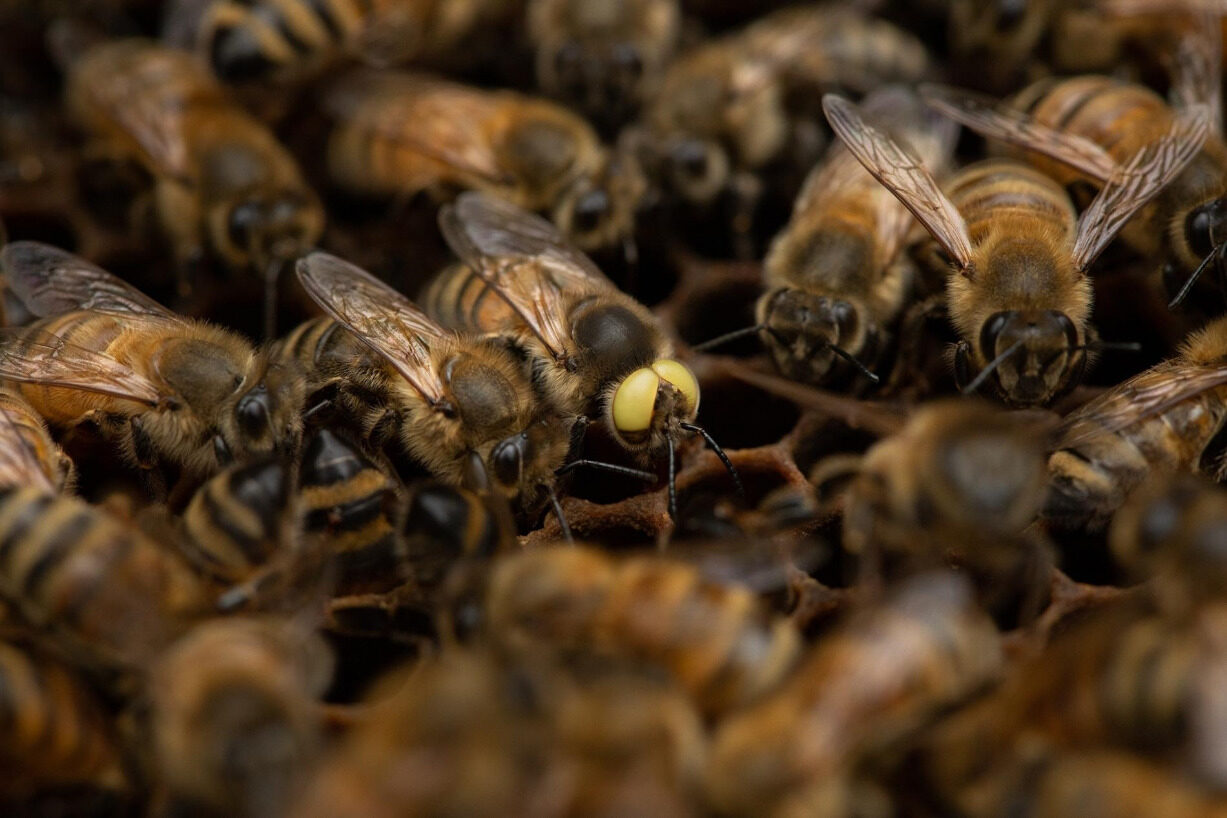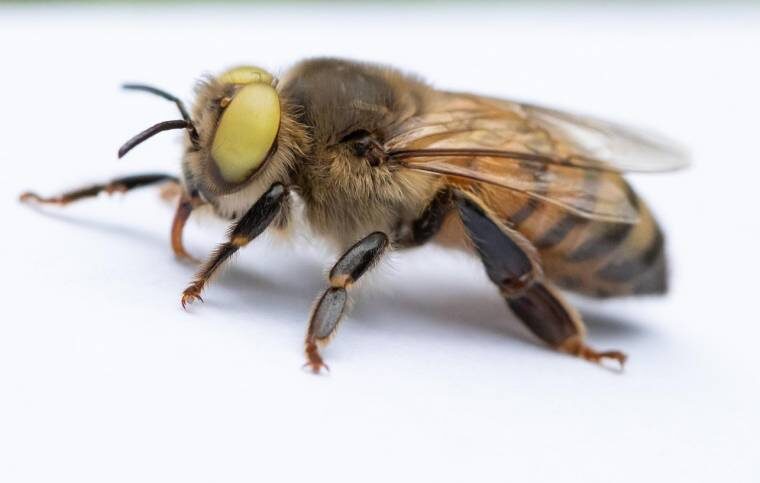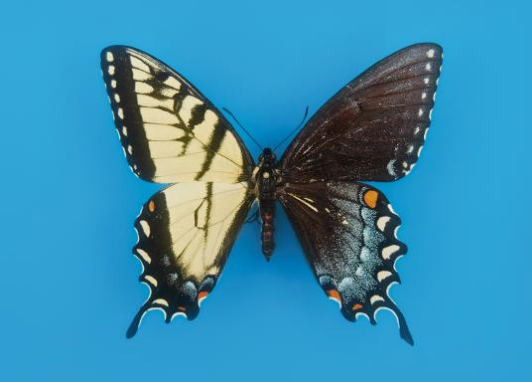
And that wasn't all. When Zgurzynski looked closer, he realized that not only were the bee's eyes off-color, but they were abnormally large. In fact, they looked like the radar-dish eyes typical of male honeybees, or drones, despite the fact that the rest of the bee — the abdomen, stinger, and wings — were clearly female.
"I've been keeping bees since 1976, and this is the first time I've seen anything like it," says Zgurzynski, who manages around six million bees at his Country Barn Farm just north of Pittsburgh, Pennsylvania.
Fortunately, Zgurzynski was accompanied that day by a photographer named Annie O'Neill, who spent nearly an hour documenting the strange little bee. Afterward, Zgurzynski decided to get a second opinion and sent a few of the shots to David Tarpy, a honeybee specialist at North Carolina State University.

Tarpy confirmed the beekeeper's suspicions. Not only did the standout bee have a genetic mutation that affects pigmentation in the eyes and likely renders the bee blind — itself a rather rare condition — but the bee also was what's known as a gynandromorph, an organism that possesses both female and male traits.
Even in widely studied species, gynandromorphy is exceedingly rare, though recent years have turned up eye-catching examples in butterflies and birds, like this cardinal spotted in Erie, Pennsylvania.


Grandfathers but no dads
Humans have paired chromosomes — one set from each parent — the combination of which guides which traits are passed on. This is why one child might have black hair and brown eyes while another sibling with the same parents might be blonde with blue eyes.
But honeybee genetics are a bit different, says Natalie Boyle, an entomologist at Pennsylvania State University.
When a queen and a drone mate, their fertilized eggs only ever generate female bees. That's because males are created from unfertilized eggs, which means they only have one set of chromosomes — those of the queen. As a result, male bees have no fathers or sons, but they do have grandfathers and grandsons.
"If you think about it for too long, you just wind up in a little bit of a mind pretzel," says Boyle.
Because drones have only one set of chromosomes, when a rare genetic mutation such as yellow eye color occurs, Boyle says, it's always expressed.
Though unusual, such remarkable eye mutations are not unheard of: Scientists have been studying eye-color mutants in honeybees since 1953.
"Biology can be weird"
The bee's gynandromorphy, though, isn't so easily explained.
If the bee were a bilateral gynandromorph — more or less split down the middle, displaying male characteristics on one side of the body and female on the other — then it would be likely that the egg split before it got fertilized, Tarpy says.
But because the odd bee's traits are what's known as mosaic gynandromorphism, in which traits from both sexes are present, it's possible that an aberration occurred later on in the bee's development. Exactly how is unknown.
"As you know, biology can be weird," Tarpy says.
Underestimated animals
Every bee has a role to play in keeping the hive humming.
Animals the size of birds and butterflies can make for colorful and obvious gynandromorphs, but not all examples are so easily identified.
Erin Krichilsky needed a microscope to discover bilateral gynandromorphy in a tiny sweat bee while working at the Smithsonian Tropical Research Institute in Panama. When she noticed that a four-millimeter insect had the large mandible of a female on the left and the smaller mandible of a male on the right, she literally sprinted around the lab to show everyone what she'd found.
"These mutants are seen as easily disregarded," says Krichilsky, who published her sweat bee findings in the Journal of Hypmenoptera Research. "But I think we're underestimating them." For instance, it could be that these half-male, half-female animals may be evolutionary precursors to new forms or behaviors, she says. It's unknown how the condition impacts their longevity and fertility.
As for the special yellow-eyed bee, Zgurzynski says he preserved it in a jar. While that may sound cruel, he says it's likely the blind insect would have eventually died or been ejected from the nest.
"I'm glad he kept the specimen," says Krichilsky. "It's probably going to be a long time before we see another one that has both of those phenomena occurring."



Quite possible. I am aware of no other credible explanation for the rapid proliferation of the soy-boy population over the past decades.